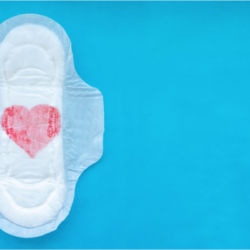Painful periods, or dysmenorrhoea, are a common health problem for women. Although it is considered normal, menstrual pain can be very embarrassing and have a considerable impact on quality of life. The causes of painful periods can vary from person to person, but there are a number of factors that can contribute to them. In this article, we’ll look at some of the common causes of painful periods.
What causes painful periods?
Painful periods, or dysmenorrhoea, are a common health problem for women. Although it is considered normal, menstrual pain can be very embarrassing and can have a considerable impact on quality of life. The causes of painful periods can vary from person to person, but there are a number of factors that can contribute to them. Painful periods (or dysmenorrhoea) can be classified into two ‘types’:
Primary dysmenorrhoea :
Primary dysmenorrhoea is a medical term that describes intense, regular menstrual pain that occurs without any underlying cause. It is common in women of childbearing age and can begin as early as the first menstrual period.
The symptoms of primary dysmenorrhoea can vary from person to person, but menstrual pain is generally the most common symptom. The pain is often described as intense cramps in the lower abdomen, which may radiate to the back and thighs. Other symptoms may include nausea, vomiting, headaches and general tiredness.
Causes of primary dysmenorrhoea
Although the exact cause of primary dysmenorrhoea is not fully understood, it is widely accepted that it is linked to contractions of the uterus during menstruation. These contractions are caused by hormones called prostaglandins, which are produced by the uterus and help to expel menstrual blood. High levels of prostaglandins can lead to more intense and painful contractions.
Although primary dysmenorrhoea is considered normal, it can be very embarrassing and can significantly affect quality of life. Women with primary dysmenorrhoea may experience intense menstrual pain for several days, which can lead to absence from work, school or other important activities.
Secondary dysmenorrhoea :
This occurs later in an adult woman who has previously had little or no menstrual pain. The pain may also be accompanied by other menstrual abnormalities (bleeding between periods, abnormally heavy periods, etc.).
Symptoms of secondary dysmenorrhoea
Symptoms of secondary dysmenorrhoea may include severe menstrual pain, often accompanied by other menstrual abnormalities such as bleeding between periods or abnormally heavy periods.
Causes of secondary dysmenorrhoea
The main cause of menstrual pain in adults is endometriosis, which corresponds to the migration and development of masses of uterine mucosa in another part of the abdomen or body where it should not be (fallopian tubes, ovaries, vagina, bladder, abdominal cavity, thorax, etc.).
As this abnormally positioned mucosa (“ectopic position”) has the same characteristics as a normal mucosa, in particular its sensitivity to hormones, it follows the same cyclical changes as the uterine mucosa. This results in “cysts” that fill with blood at the end of each cycle. In the same way, fragments of the uterine lining can sink into the muscular wall of the uterus to cause “adenomyosis”, which also develops cyclically. Menstrual pain can also be related to a chronic genital infection, uterine fibroids, ovarian disorders such as ovarian cysts, uterine polyps, etc. Secondary dysmenorrhoea therefore warrants a careful medical examination.
Painful periods can have a considerable impact on a woman’s quality of life. It is essential to understand the different causes of primary and secondary dysmenorrhoea in order to better manage and treat these pains. If you are suffering from painful periods, it is advisable to consult a healthcare professional for an accurate diagnosis and appropriate advice.





